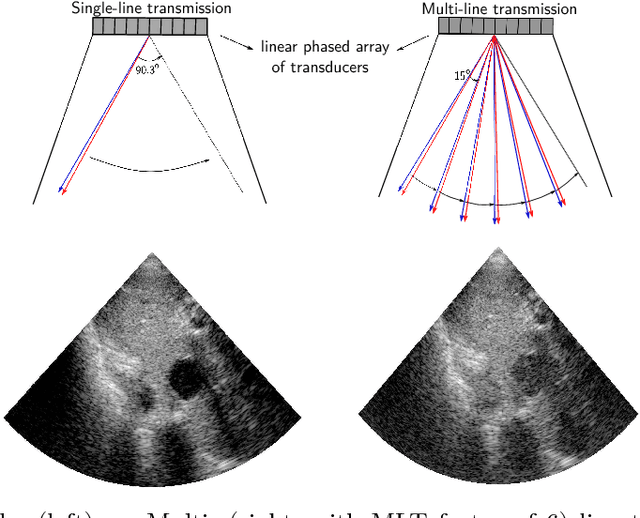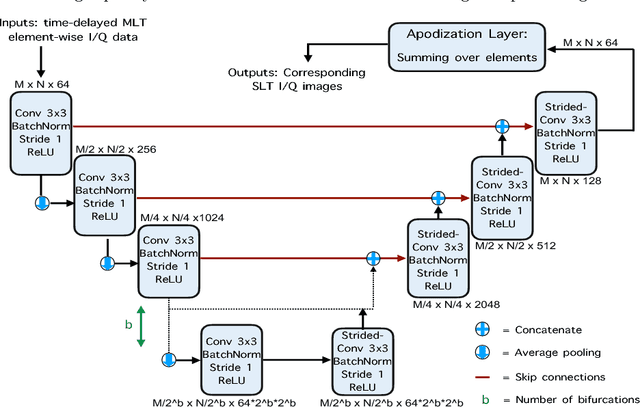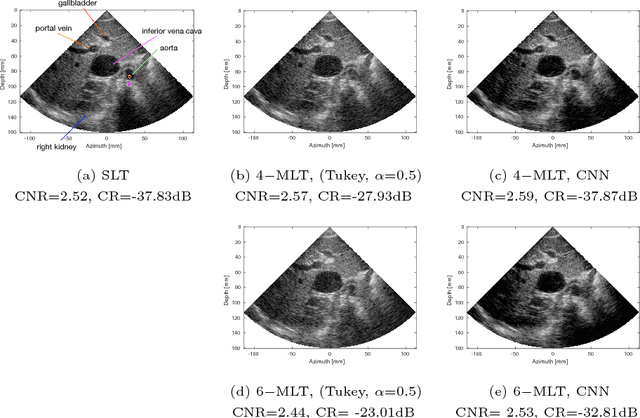High quality ultrasonic multi-line transmission through deep learning
Paper and Code
Aug 23, 2018


Frame rate is a crucial consideration in cardiac ultrasound imaging and 3D sonography. Several methods have been proposed in the medical ultrasound literature aiming at accelerating the image acquisition. In this paper, we consider one such method called \textit{multi-line transmission} (MLT), in which several evenly separated focused beams are transmitted simultaneously. While MLT reduces the acquisition time, it comes at the expense of a heavy loss of contrast due to the interactions between the beams (cross-talk artifact). In this paper, we introduce a data-driven method to reduce the artifacts arising in MLT. To this end, we propose to train an end-to-end convolutional neural network consisting of correction layers followed by a constant apodization layer. The network is trained on pairs of raw data obtained through MLT and the corresponding \textit{single-line transmission} (SLT) data. Experimental evaluation demonstrates significant improvement both in the visual image quality and in objective measures such as contrast ratio and contrast-to-noise ratio, while preserving resolution unlike traditional apodization-based methods. We show that the proposed method is able to generalize well across different patients and anatomies on real and phantom data.
 Add to Chrome
Add to Chrome Add to Firefox
Add to Firefox Add to Edge
Add to Edge